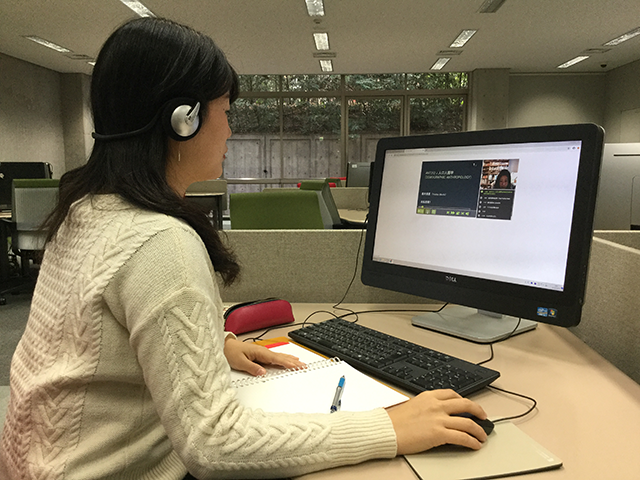Feb. 25, 2018
[ANT212] Making Calculations a Pre-Class Exercise (Cloud Campus + Moodle)

Calculation exercises, which are difficult to devote ample class time to, were assigned as pre-class learning material, using Cloud Campus, an application for creating online teaching material. The instructor created a video introducing an index and explaining the calculation method and data. Students watched the video before class and submitted their calculations and responded to questions on Moodle.
| Instructor: | Yoshie MORIKI |
| Course Title: | ANT212 Demographic Anthropology |
| Term: | 2017 Winter |
| Enquiry: | As calculation exercises are difficult to devote ample class time to, the instructor wanted to assign them as pre-class learning material by creating a video for students to view online. |
| Support: | The instructor used Cloud Campus, an application for creating online teaching material, to create a video in her office introducing an index and explaining the calculation method and data. Students watched the video before class and submitted their calculations and responded to questions via Moodle Assignment and Forum. |
| Tools: |
• Cloud Campus • Moodle (Assignment) |
| Reference: | FD-Newsletter, vol. 23, no. 1 (“ICT Tools to Support Teaching and Learning: An Overview with Examples from ICU Courses”) |
(From the Course Instructor)
As the Anthropology Area Major course “Demographic Anthropology” needs to cover content on both demography and anthropology, the question of when and how to communicate technical concepts presented a challenge.
For example, there is a standard demographic indicator called the total fertility rate (TFR). In order to understand the causes of the extremely low birth rate in Japan and to consider its cultural meaning, it is important for students not only to learn the definition but also to calculate birth rates with their own hands. However, it was difficult to secure the time for everything from the calculation to evaluation of the meaning within the set class time. Therefore, this year, I tried implementing the "flipped classroom" method by posting a video of myself introducing the TFR indicator and explaining the calculation method and data on Moodle. Students were tasked with watching the video before class, calculating the TFR, and posting their answers on Moodle.
By flipping the classroom, I enabled students to complete the computation in their own time before class (some students used Excel, whereas others simply calculated on paper). This also enabled me to allocate sufficient class time to a comprehensive discussion of the issues from an anthropological perspective. I was rather embarrassed about having to record myself on video, but I was happy with the outcome for the course, so I plan to continue making use of these tools next year.
(Yoshie MORIKI, Department of Society, Culture, and Media)

